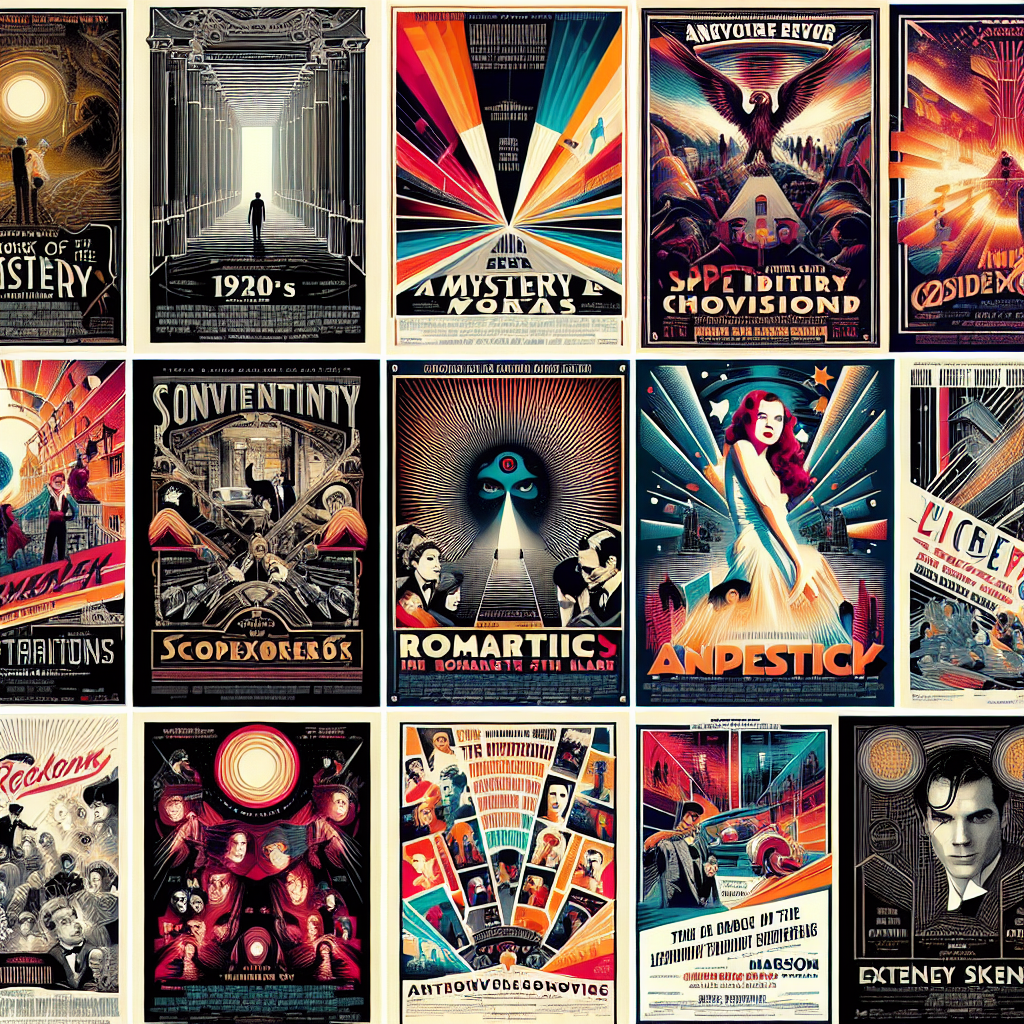
The Art of Movie Posters: Visual Branding in Cinema
The Art of Movie Posters: Visual Branding in Cinema
Welcome to the vibrant world of movie posters, where every detail serves a purpose, and every design decision contributes to the visual branding of cinema. Movie posters have been captivating audiences for more than a century, evolving from simple illustrations to complex designs that distill an entire film into a single dynamic image. In this article, we explore the fascinating art of movie posters, their history, and their role in visual branding.
The Evolution of Movie Posters
The journey of movie posters began in the early 20th century. Initially, they were simple advertising tools, often focusing on the stars of the film rather than the plot. With advancements in printing technology, the 1920s and 1930s saw the rise of Art Deco-inspired designs that celebrated the glamour of Hollywood.
Fast forward to the 1950s and 1960s, and movie posters embraced the vibrant, rebellious spirit of the times. Pop art influences, bold typography, and striking color palettes became the norm. The 1980s and 1990s introduced even more diversity in styles, embracing everything from hyper-realistic digital art to minimalist designs.
Key Elements of Effective Movie Posters
Creating an effective movie poster is no small feat. It requires a keen understanding of visual storytelling and branding. Here are some key elements that contribute to a successful movie poster:
- Eye-Catching Imagery: The imagery is often the first thing viewers notice. It should be compelling and reflective of the film’s theme.
- Color Scheme: Colors evoke emotions. The right palette can convey the genre and tone of the movie instantly.
- Typography: Fonts should complement the movie’s theme. Think whimsical fonts for comedies and sleek, modern fonts for sci-fi films.
- Star Power: Featuring famous actors can draw immediate attention and interest.
- Taglines: A clever tagline can intrigue and entice potential viewers.
Iconic Movie Posters and Their Impact
Some movie posters have become iconic, transcending their role as marketing tools to become pieces of art in their own right. Let’s take a look at a few examples:
- Jaws (1975): Who can forget the terrifying image of the enormous shark emerging from the depths, set against a swimmer’s silhouette? This poster set the tone for the entire film and became a cultural touchstone.
- Star Wars (1977): The original Star Wars poster is a masterpiece of visual storytelling, featuring a stunning layout of characters and scenes that gave audiences a glimpse of the epic space adventure.
- Pulp Fiction (1994): The noir-inspired poster for Pulp Fiction, featuring Uma Thurman with a retro hairstyle and cigarette, captures the film’s edgy and eclectic style perfectly.
The Role of Movie Posters in Branding
Movie posters are not just about attracting viewers; they play a crucial role in establishing a movie’s brand. A well-designed poster can create a lasting impression and even become synonymous with the film itself. This visual branding helps in building a strong identity that is easily recognizable across various marketing platforms.
A prime example of this is the Marvel Cinematic Universe (MCU). Each poster in the franchise, while unique to its film, maintains a cohesive style that ties back to the overall MCU brand. This consistency helps in building a loyal fanbase who can instantly recognize new releases.
The Digital Age: The Evolution Continues
In the age of digital media, movie posters have adapted to new platforms. Today, posters are designed not only for print but also for web and social media. Motion posters, animated elements, and interactive designs have become part of the toolkit for modern movie marketing. Despite these advancements, the core principles of creating captivating and effective movie posters remain the same.
Conclusion
The art of movie posters is a fascinating blend of creativity and strategic branding. From the early days of cinema to the digital age, these visual masterpieces continue to capture the essence of films and entice audiences around the world. The next time you walk past a movie poster, take a moment to appreciate the artistry and thought that goes into this unique form of visual branding.
If you enjoyed this deep dive into the world of movie posters, stay tuned for more interesting articles exploring the intersection of art and popular culture!
And remember, never judge a book by its cover, but you can totally judge a movie by its poster!